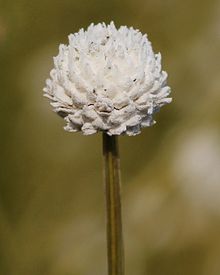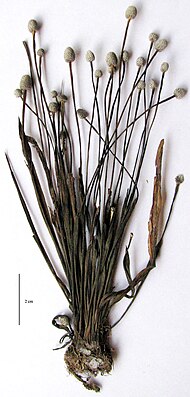| Eriocaulon | |
|---|---|
 | |
| Eriocaulon nudicuspe | |
| Scientific classification | |
| Kingdom: | Plantae |
| Clade: | Tracheophytes |
| Clade: | Angiosperms |
| Clade: | Monocots |
| Clade: | Commelinids |
| Order: | Poales |
| Family: | Eriocaulaceae |
| Genus: | Eriocaulon L. [1] |
| Synonyms [2] | |
| |
Eriocaulon is a genus of about 400 species of monocotyledonous flowering plants in the family Eriocaulaceae, commonly known as pipeworts.



